2015 BMW I8 Review - Supercar for Environmentalists

2015 BMW i81.5-liter DOHC I-3, VANOS, hybrid (Gas engine: 228 horsepower @ 5,800 rpm, 236 lb-ft @ 3,700 rpm; Electric motor: 129 horsepower @ 4,800)6-speed automatic (rear) and 2-speed (front), Lithium ion battery
28 city/29 highway/28 combined (EPA Rating, MPG)
27.4 mpg on the ‘I didn’t plug-in the plug-in’ cycle (Observed, MPG)
Tested Options: Giga World package
Base Price:
* Prices include $995 destination charge.
This is the car that people in the 1970s predicted we would be driving in the year 2000. Fifteen years after the turn of the millennium, the BMW i8 is the machine that looks like no other BMW — and certainly like no other car on the road. Its gasoline and plug-in electric powertrain compliment its looks, bringing together the efficiency of an electric car and the convenience of an internal combustion engine.
But there is a lot more to understand about what the BMW i8 is and is not. Is it an exotic supercar? Or is it a dream of the environmentally minded automotive enthusiast? Or is it something else altogether? Could this be the one vehicle which we cannot currently classify? Or is it all of these things?
Has the future finally arrived?
Its looks alone draw the attention of everyone on the road. Pedestrians gawk. Other drivers wave or even honk. Some yell out compliments. When parked, crowds gather, pictures are taken. Bros shower it with awe. Ten-year-old boys spew out its specs. Everyone asks to open the doors. Women seem more reserved, quietly judging the car and then its driver. (Except that one mid-twenties woman who, after a quick conversation that divulged her knowledge of all things cars, ditched her man, jumped into the passenger seat, and was ready to go wherever I was going.) Two Jamaican guys explained to me that BMW really means Bob Marley and the Wailers. Most people had no idea what it is but they knew it was special. Potential i8 buyers should know that all this attention gets old really quickly.
Pop up the door, place your butt on the wide door sill and slide into the seat — practice makes you a superhero. Once inside, the interior seems intimidating at first, but within a few minutes similarities to any modern BMW can be seen. In fact, I have not noticed any features in this car that can’t be had on a common yuppie enthusiast-leased 335i. Visibility is shockingly good for a mid-engine car. There are small jump seats in the back, which my seven year old daughter loved as she could see out and no one could see her. Much like the Audi R8 or the Acura NSX, and unlike any Ferrari, everything about using this car as a car is shockingly normal and drama free.
In the middle of this vehicle is a three cylinder, 1.5-liter turbocharged engine that produces 228 horsepower while inhaling air at 22 psi. Next to it is a tiny electric motor that produces eleven horsepower and is used mostly to start the engine and mask the turbo lag. It can be thought of as an electric supercharger. Those two send the power to the rear wheels via a six-speed automatic transmission. Up front is another electric motor that produces 129 horsepower and sends its power to the front wheels via a two-speed transmission. Combined, this gadgetry produces 357 horsepower, which sure as heck does not seem like a lot for a mid-engined exotic in the days of 707-horsepower family sedans.
It is my suspicion, however, that BMW wants you to think of its powerplant as a black box. The front clam-shell cannot be opened by anyone other a factory trained technician. The rear engine can be accessed through the rear hatch, except it really can’t. Underneath what looks like an engine cover is another engine cover which is secured with Allen bolts. I cannot recall any other vehicle in which the engine was completely sealed off. Even the 911 allows you to see part of the intake manifold.
Instead, BMW wants you to focus on are the three main driving modes: eDrive, also known as electric; Comfort, also known as normal; and Sport, also known as faster than Comfort. In eDrive, the i8 is a front-wheel-drive electric car. In Comfort, it’s an all-wheel-drive car with either the gasoline engine and/or the electric motors propelling the vehicle forward. In Sport mode, the three-banger is working full-time, the front transmission shifts into another gear, and the rear transmission stays in gear longer. All of this is accompanied by a concert of noises never heard from one car before; the i8 quietly whistles, whines, and snorts, all at the same time.
The EPA rates the i8 for 28 mpg in the city and 29 mpg on the highway, for a combined 28 mpg rating. That may not sound impressive because it does not take into account the 76 eMPG rating, which is the distance a vehicle can travel in electric mode using the amount of energy contained in one gallon of gasoline. The i8 can travel up to fifteen miles in eDrive with a fully charged battery, but that is where I ran into a problem.
I live in a downtown Boston high-rise building where each parking spot is privately owned. There are no changing stations or outlets available, so I was not able to charge the car there. Yes, there are charging stations, but they required me to either park on a downtown street — which I never do with press cars — or pay an exuberant amount of money for a night of parking a mile from my home. Neither of these was a viable option for me, so I relied on the battery being charged through regenerative braking and the three-banger. My driving was limited to heavy city traffic or sensible hooning, nothing in between. My result was a computer-indicated 27.4 mpg, which I thought was pretty good given the circumstances. If I had access to a charging station, I would have no issue driving to work and back in purely electric mode.
The i8 is made of a plastic-reinforced carbon fiber tub which sits atop an aluminum alloy frame, with some magnesium thrown in here and there. There are parts of the body that were intentionally left unfinished or unpainted, which look like a mix of fiberglass and carbon-fiber. The batteries, which are located in what could be described as the transmission/driveshaft tunnel on a typical car, along with the motors, are the heavy parts. The curb weight of the i8 is 3,455 pounds, the bulk of which is located just a few inches from the ground.
On paper, with 357 horsepower and at 3,455 pounds, the BMW i8 does not seem all that impressive. Yet, in street driving, it’s like nothing else I have ever driven, mostly due to the massive amount of torque that is instantly available. The total sum of torque the i8’s black box, derived by some highly complex formulae, is 420 lb-ft at some irrelevant engine speed. This is what the driver and passenger feel and it’s what gives the i8 the sense of fast. Be it from the electric, conventional, or both motors, the power is always there; there are no dead spots, no waiting for boost to build, no ridiculously high redlines. Quietly and smoothly, pinning its occupants to their seats, the BMW i8 just goes.
In a sense, that is where the i8 does not make any sense. The common metrics we associate with performance do not relate the same way to the i8. On paper, the i8 may not be faster than a Porsche 911, but is sure as heck feels faster. Neither any hybrid, nor any vehicle with a three-cylinder engine, is supposed to be this fast. It’s worth noting the obvious: In addition to being fast, the i8 is very much a driver’s car. Handling and feedback through the chassis is typical of sporty BMWs, that is to say great and on par with the Audi R8.
One may think that the i8 is the new M1, but it isn’t. A quick glance inside will reveal that it’s not an M car at all. The seats are not as supportive and lack the various adjustments of the amazing seats that come in every BMW M car. There is no M anything; no M modes, no M buttons. Even the tires, while perfectly suited for the street, and not at all objectionable in casual hooning, aren’t worthy of a crapcan racer (note: this vehicle had the sportier 215mm and 245mm wide tires). The i8 is fast, it does everything well, but it’s not something anyone would do a track day in, and therefore it is not an M car.
What the i8 shares with the iconic M1 is that both vehicles mark the start of new era for the BMW brand. The M1 started a line of fantastic performance, yet functional, vehicles. The i8 is here to prove that electric and efficient does not mean boring and slow. None of that stuff about the engine, the motors, the batteries, and the power distribution matters. Here is a machine from the future and in it is a black box that makes it go. It’s stunning, it’s fast, and it’s green.
The future is now.
Kamil Kaluski is the East Coast Editor for Hooniverse.com. His ramblings on Eastern European cars, $500 racers, and other miscellaneous automotive stuff can be found there. In his life he has owned seven BMWs, new and old, all with inline-six cylinder engines and manual transmissions.
BMW of North America provided the vehicle for the purpose of this review.

More by Kamil Kaluski
Latest Car Reviews
Read moreLatest Product Reviews
Read moreRecent Comments
- Redapple2 jeffbut they dont want to ... their pick up is 4th behind ford/ram, Toyota. GM has the Best engineers in the world. More truck profit than the other 3. Silverado + Sierra+ Tahoe + Yukon sales = 2x ford total @ $15,000 profit per. Tons o $ to invest in the BEST truck. No. They make crap. Garbage. Evil gm Vampire
- Rishabh Ive actually seen the one unit you mentioned, driving around in gurugram once. And thats why i got curious to know more about how many they sold. Seems like i saw the only one!
- Amy I owned this exact car from 16 until 19 (1990 to 1993) I miss this car immensely and am on the search to own it again, although it looks like my search may be in vane. It was affectionatly dubbed, " The Dragon Wagon," and hauled many a teenager around the city of Charlotte, NC. For me, it was dependable and trustworthy. I was able to do much of the maintenance myself until I was struck by lightning and a month later the battery exploded. My parents did have the entire electrical system redone and he was back to new. I hope to find one in the near future and make it my every day driver. I'm a dreamer.
- Jeff Overall I prefer the 59 GM cars to the 58s because of less chrome but I have a new appreciation of the 58 Cadillac Eldorados after reading this series. I use to not like the 58 Eldorados but I now don't mind them. Overall I prefer the 55-57s GMs over most of the 58-60s GMs. For the most part I like the 61 GMs. Chryslers I like the 57 and 58s. Fords I liked the 55 thru 57s but the 58s and 59s not as much with the exception of Mercury which I for the most part like all those. As the 60s progressed the tail fins started to go away and the amount of chrome was reduced. More understated.
- Theflyersfan Nissan could have the best auto lineup of any carmaker (they don't), but until they improve one major issue, the best cars out there won't matter. That is the dealership experience. Year after year in multiple customer service surveys from groups like JD Power and CR, Nissan frequency scrapes the bottom. Personally, I really like the never seen new Z, but after having several truly awful Nissan dealer experiences, my shadow will never darken a Nissan showroom. I'm painting with broad strokes here, but maybe it is so ingrained in their culture to try to take advantage of people who might not be savvy enough in the buying experience that they by default treat everyone like idiots and saps. All of this has to be frustrating to Nissan HQ as they are improving their lineup but their dealers drag them down.




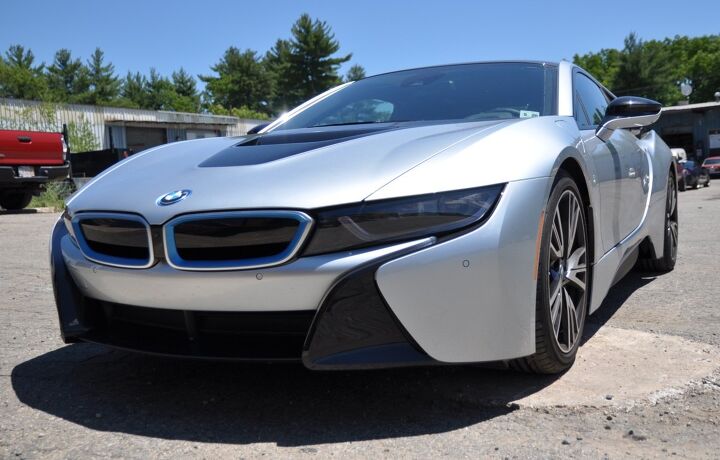





















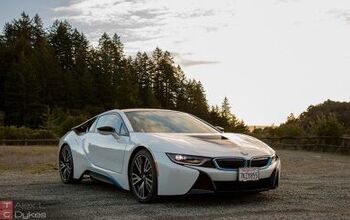
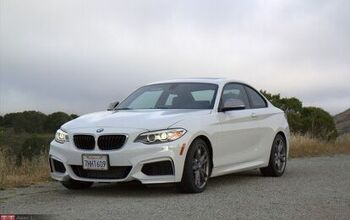

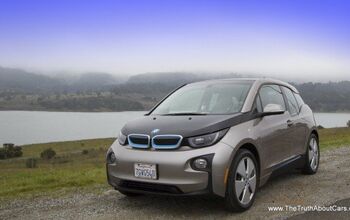
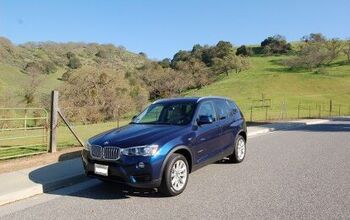










Comments
Join the conversation
Even as a BMW owner, I am more interested in the Cat 950H wheel loader behind this car.
"There are small jump seats in the back, which my seven year old daughter loved as she could see out and no one could see her." Just like the back of an M-body Fifth Avenue!